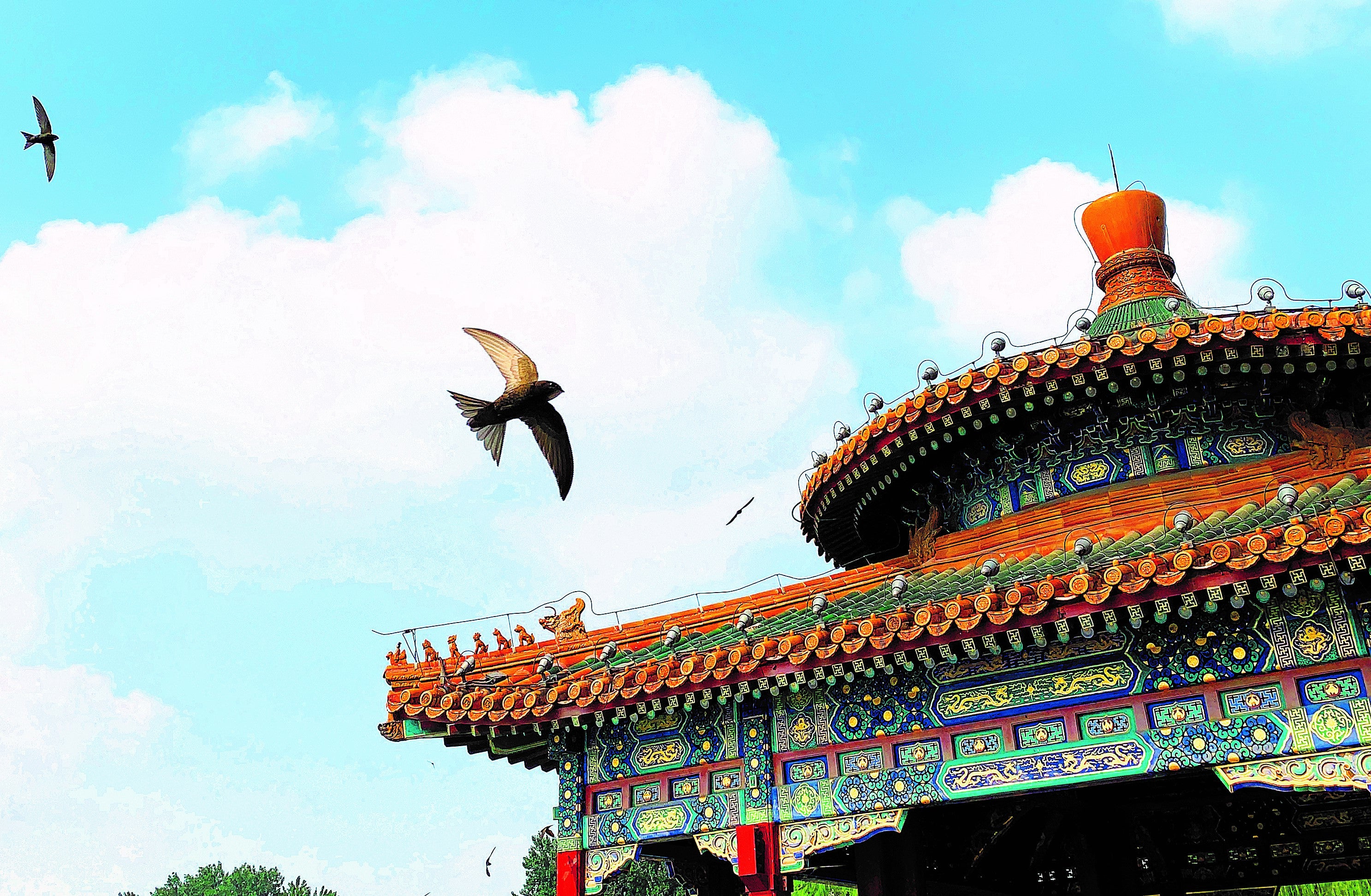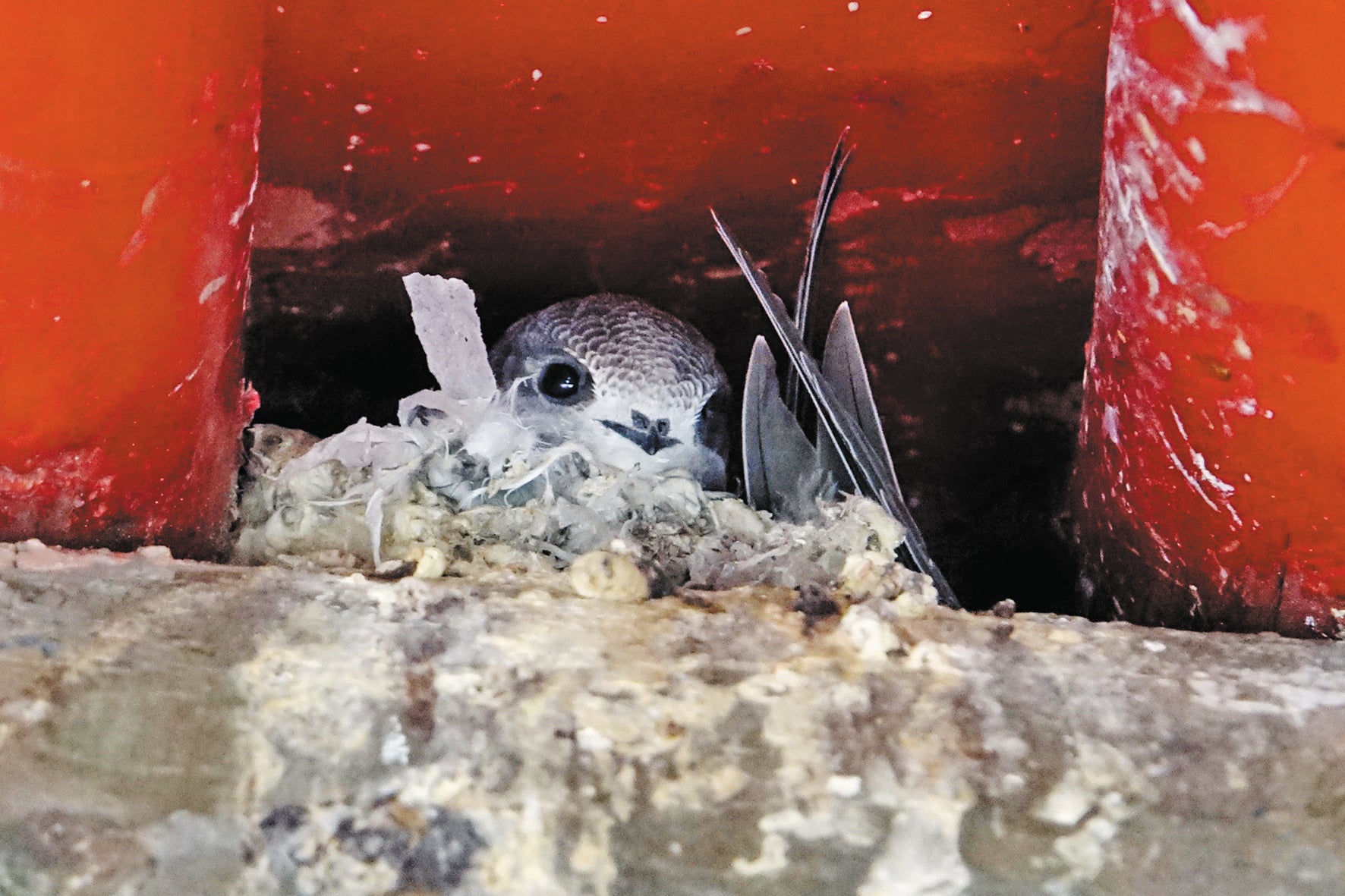Vital clues shed light on bird migration routes
THE ARTICLES ON THESE PAGES ARE PRODUCED BY CHINA DAILY, WHICH TAKES SOLE RESPONSIBILITY FOR THE CONTENTS

In late spring, Yuan Xuejun, who works in an office near the Zhengyang Gate in Beijing, loves hearing the sharp, clear notes of birds in the sky.
She is frequently distracted from her work by their chirping, and takes numerous photos of them against the backdrop of the gate.
Each year the birds appear in the spring, before migrating in the autumn. A study published in the international journal Movement Ecology in June showed the migration routes and preferred habitats of migratory birds for the first time.
Yuan is enchanted by the Beijing swift (Apus apus pekinensis), the only wild migratory avian species in the world named after the Chinese capital, and a subspecies of the common swift (Apus apus).
These birds travel more than 9,000 miles annually to spend the northern winter in southern Africa, covering the same distance when they return to Beijing to build nests and start breeding.
The swifts, which are six to seven inches long, fly fast and cover long distances. They rarely land during migration, and perform the round trip of 19,000 miles every year, passing over 37 countries and regions.
According to the study, Beijing swifts begin their autumn migration in the middle of July, leaving the city after breeding. They fly northwest to Mongolia, then west over the Xinjiang Uygur autonomous region, the Junggar Basin – a large sedimentary area in northwestern China – and then enter Central Asia.
Around August 16 every year the birds cross the Red Sea and head towards Central Africa. They reach the eastern Congo Basin in early September, where they remain for about one month, before flying south to reach the Southern African Plateau in early November. They stay there for about 100 days.
Liu Yang, corresponding author of the study and professor of life sciences at Sun Yat-sen University in Guangzhou, capital of Guangdong province, said: “The research also suggests that they adapt well to semi-arid areas and have a preference for hot air currents. One of the major reasons for this is that countless insects, the birds’ primary source of food, abound in relatively dry regions.”
Rather than heading straight to the hot and humid south, the swifts take a “labour-saving route” by first flying north and then northwest due to their dietary habits, Liu said.

The return route for the spring migration is almost identical. Flying almost nonstop, the swifts return to their breeding area after arriving in Beijing from about mid-April to mid-May.
Understanding the behaviour of birds is important in protecting migratory species, and the difficult task of tracking Beijing swifts is made easier by devices known as light-level geolocators, which are carried by the birds.
During the breeding season from 2014 to 2018, a research team from Beijing Normal University and Sun Yat-sen University comprising ornithological experts and volunteers from Belgium, Sweden and the United Kingdom conducted fieldwork at the Kuoru Pavilion in Beijing’s landmark Summer Palace.
“Five nets were set up in the Kuoru Pavilion, with each one precisely positioned and designed to protect the structure and ensure the birds were not harmed when captured,” said Zhao Xinru, an ornithologist at Beijing Normal University and a lead researcher for the study paper.
After being captured, randomly selected swifts were fitted with the tracking devices by the volunteers.
“We take particular care to ensure that just the width of a pencil separates the devices and the birds’ bodies so that the swifts are comfortable and can fly freely,” Zhao said.
Liu said a geolocator weighs a little more than one gram, and under international standards the devices cannot exceed 3 per cent of the bird’s weight. When tagged to the swifts the geolocators track sunrise and sunset and record light intensity.
“Dawn and sunset vary according to location, and the devices give us the opportunity to determine the swifts’ approximate position based on the birds’ circadian systems.”
